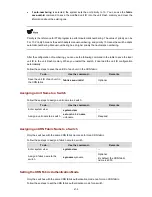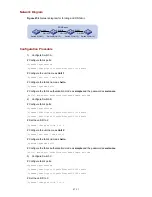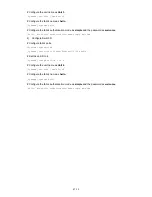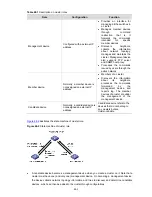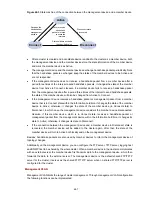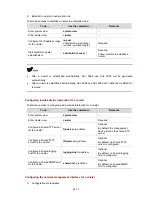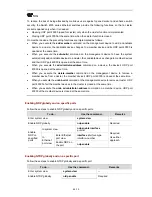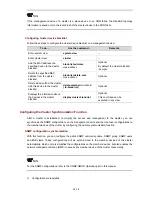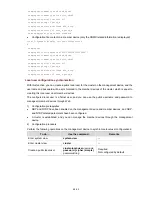
downstream switch compares its own MAC address with the destination MAC address carried in
the multicast packet:
z
If the two MAC addresses are the same, the downstream switch sends a response to the switch
sending the
tracemac
command, indicating the success of the
tracemac
command.
z
If the two MAC addresses are different, the downstream switch will query the port connected with
its downstream switch based on the MAC address and VLAN ID, and then forward the packet to its
downstream switch. If within the specified hops, a switch with the specified destination MAC
address is found, this switch sends a response to the switch sending the
tracemac
command,
indicating the success of the
tracemac
command. If no switch with the specified destination MAC
address (or IP address) is found, the multicast packet will not be forwarded to the downstream any
more.
z
If the queried IP address has a corresponding ARP entry, but the MAC address entry
corresponding to the IP address does not exist, the trace of the device fails.
z
To trace a specific device using the
tracemac
command, make sure that all the devices passed
support the
tracemac
function.
z
To trace a specific device in a management VLAN using the
tracemac
command, make sure that
all the devices passed are within the same management VLAN as the device to be traced.
Cluster Configuration Task List
Before configuring a cluster, you need to determine the roles and functions the switches play. You also
need to configure the related functions, preparing for the communication between devices within the
cluster.
Complete the following tasks to configure cluster:
Task
Remarks
Configuring the Management Device
Required
Configuring Member Devices
Required
Managing a Cluster through the Management
Device
Optional
Configuring the Enhanced Cluster Features
Optional
Configuring the Cluster Synchronization
Function
Optional
Configuring the Management Device
Management device configuration task list
Complete the following tasks to configure management device:
48-9



